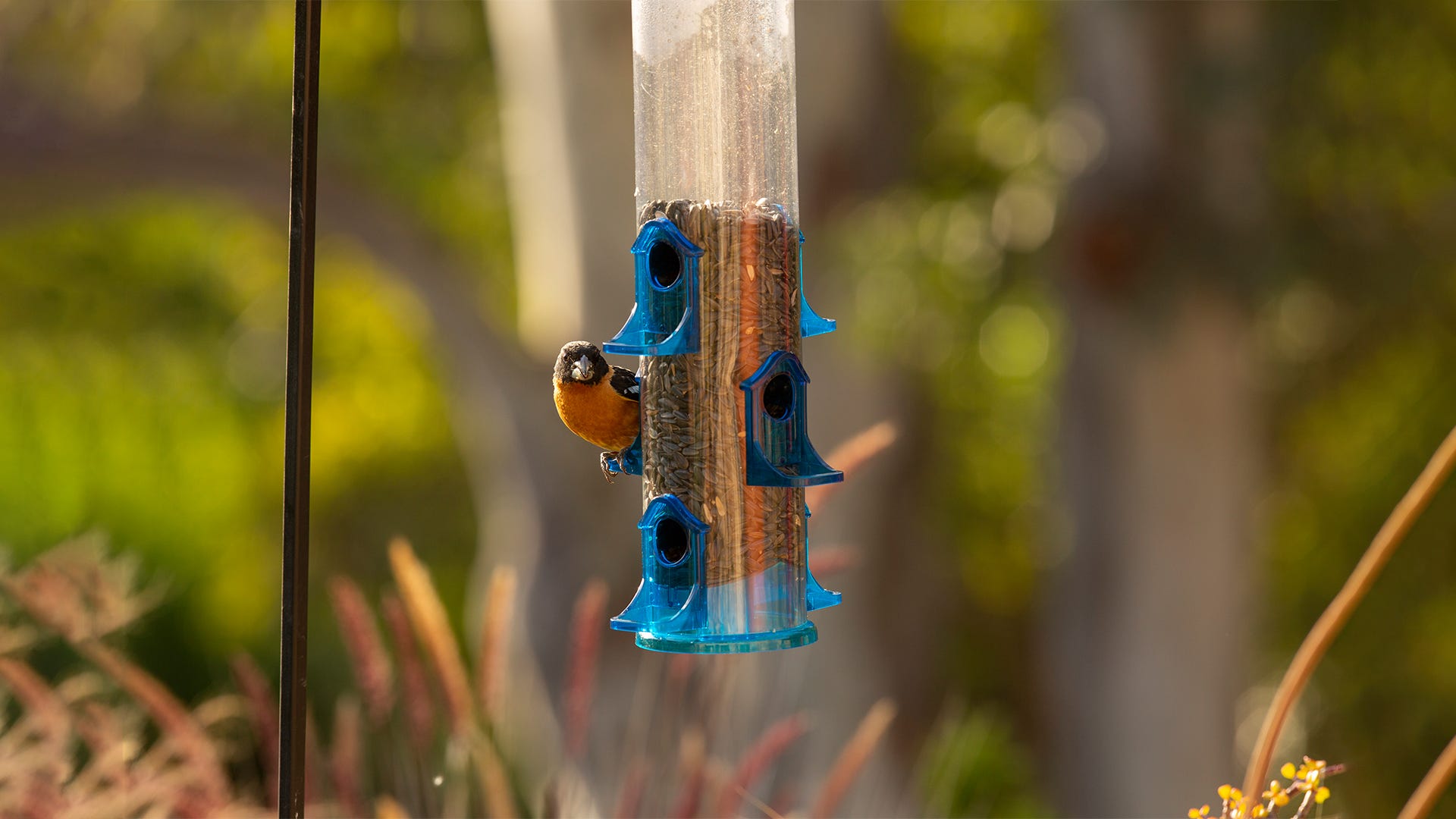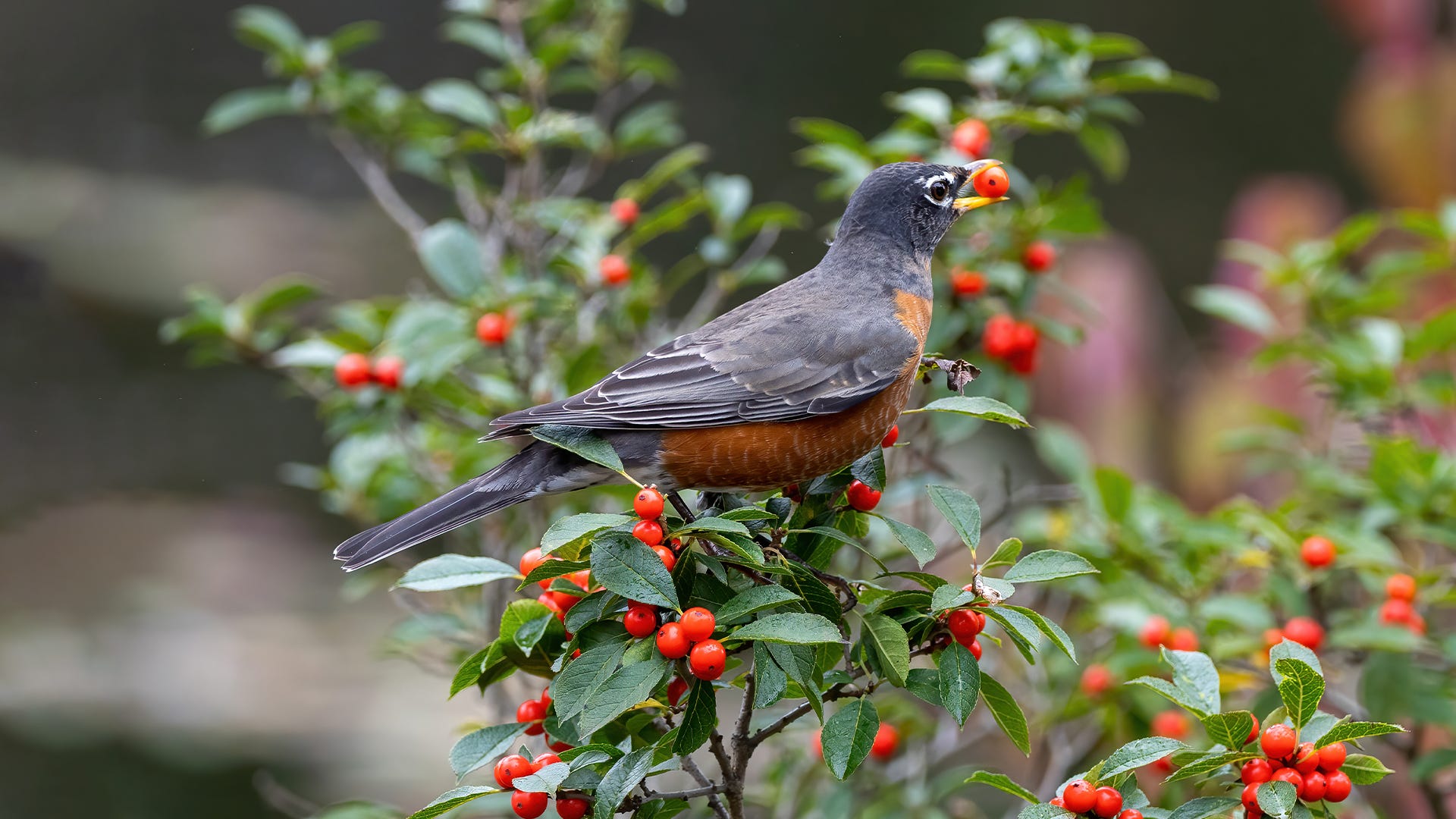
Buntings are colorful, cheerful songbirds that brighten up every yard they visit. If these occasionally elusive birds aren’t yet visiting your yard, don’t despair. There are ways to successfully attract buntings so you can enjoy their company.
Different Buntings in Different Yards
There are a wide range of bunting species in the world. Some are more closely related to sparrows, some are close relatives of finches, and some most resemble grosbeaks. The most common North American buntings that can arrive in bunting-friendly yards include:
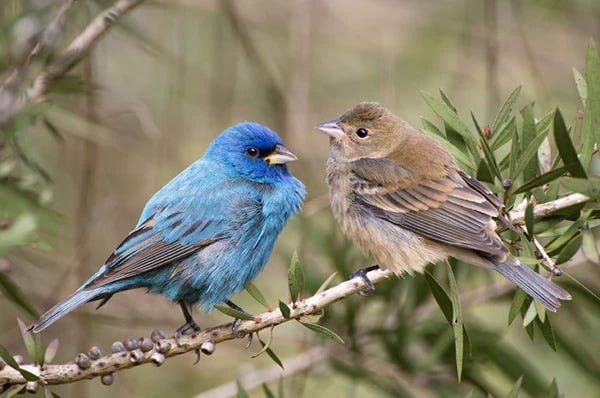
Indigo Bunting (Passerina cyanea): Allover rich blue plumage in males, and dull tan in females. Males also show a slight darkness on the lores that can look like a mask. These birds are found in the eastern United States during the summer breeding season.
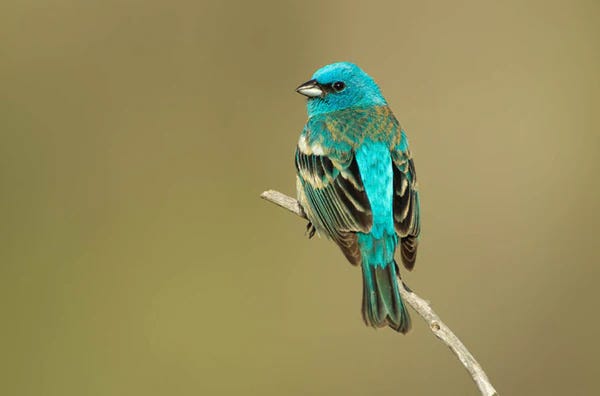
Lazuli Bunting (Passerina amoena): Males have a blue hood and upperparts, two white wing bars, a rusty chest, and a white abdomen. Females have much plainer, warm brownish plumage. These birds are found in the western U.S. throughout summer.
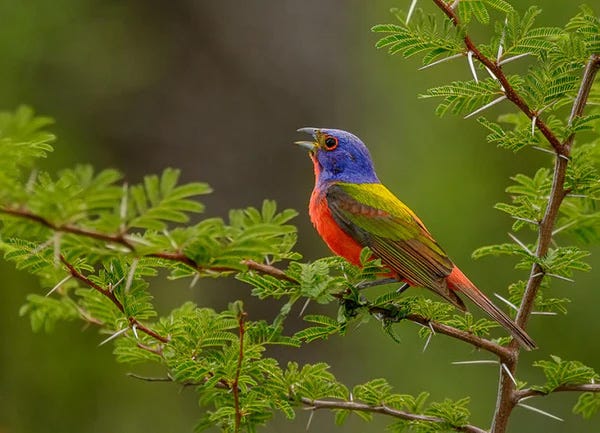
Painted Bunting (Passerina ciris): Males have a bright blue head, red throat and underparts, and a bright green back. Females are an allover lemon-lime shade. You can find these buntings in the southeastern and Gulf coast areas of the U.S. in summer. They can be found as far west as Texas, Oklahoma, and Arkansas.
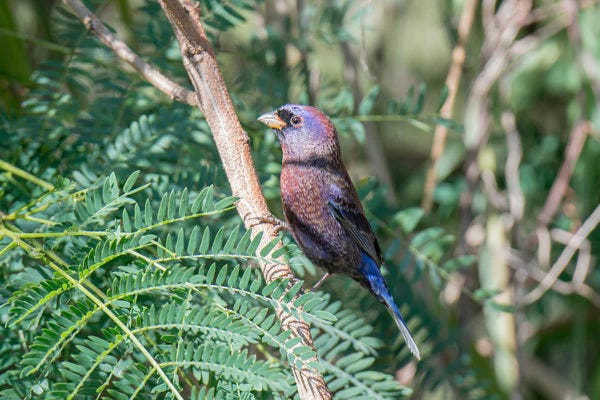
Varied Bunting (Passerina versicolor): These blue buntings have a reddish or rusty tone to their plumage that may show much stronger in bright sunlight. Females are dull yellow-green. You can find varied buntings in southern Texas and southeastern Arizona in summer.
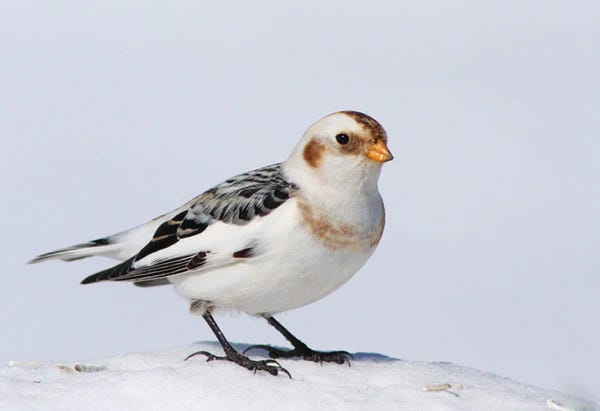
Snow Bunting (Plectrophenax nivalis): The only winter bunting in North America, the snow bunting has white non-breeding plumage with a mottled back and an incomplete, light chestnut collar. You can find snow buntings in the northern United States and southern Canada during the winter.
Despite the differences in bunting ranges, these birds all have similar needs. The same steps can be effective to
attract each species in its appropriate range.
Feeding Buntings
Buntings are largely granivorous and feed on different seeds. They will visit bird feeders for smaller seeds, especially white proso millet, Nyjer, and sunflower hearts or chips. Planting seed-bearing flowers can also provide natural seeds for buntings to enjoy. Be sure to select native flower varieties they will more easily recognize. Birdseed should be offered in hopper or tube feeders with comfortable perches for buntings of different sizes. Seed can also be scattered on the ground, especially near thickets where these birds will feel more secure.
See also: How to Plant the Perfect Birdseed GardenSpring and Summer
Hungry hatchlings need abundant protein for growth and development, and they will eat a wide range of insects. Adding mealworms to the feeding station can provide them a reliable and welcome food source. In spring, when insects may not yet be as abundant as needed, buntings may also eat berries—especially strawberries and blueberries.
Late Summer and Fall
These birds are preparing for migration, and they may be tempted by shredded or crumbled suet at feeders. This can provide them a quick energy source and extra fat to fuel their southward journeys.
Winter
Snow buntings happily feed on the ground, scratching to uncover hidden seeds. Providing a ground feeding area with sprinkled seed will help attract these lovely winter birds.
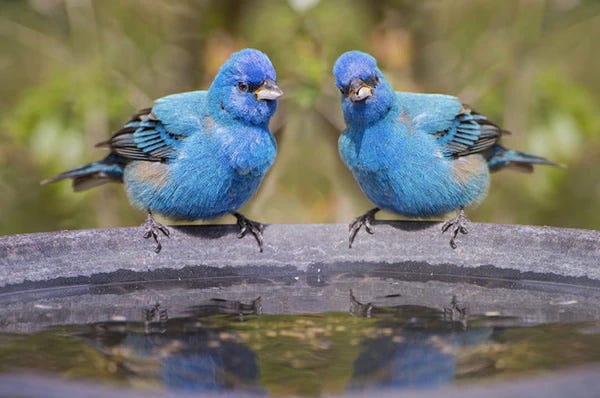
Water for Buntings
In all seasons, buntings need water for drinking and bathing. A shallow basin is best. Position the bath in shade to minimize algae and bacterial growth. Placing the bath near scrubby shelter will also help buntings feel safer to visit, and a small dripper or bubbler can attract their attention with sparkles and splashes.
To keep birds safe from diseases, you should thoroughly clean and sterilize your birdbath. Use a mild dish soap or a weak bleach solution every few days, especially during the hottest part of summer. In winter, try offering a heated birdbath for snow buntings and other winter guests.
See also: 8 Things You Should Know Before Installing a Bird BathBunting-Friendly Shelter
Buntings can be shy. Dense, thicket-like shelter will help them feel more secure. Leave a quiet corner of the yard naturalized with leafy shrubs, and minimize pruning that would open the patch up and make it more visible. Native plants are best because the birds will recognize them more easily and the plants can thrive with minimal care or disturbance.
Not only will buntings use shelter at night or during poor weather, but these same thicket-like areas can be prime nesting habitat for bunting families. Provide nesting material such as grass clippings, pine needles, and chemical-free pet or animal hair to encourage buntings to nest nearby. Leave spiderwebs intact throughout the yard. Buntings will use the sticky webs to bind their nests together.
See also: Birdscaping: 10 Tips for How to Attract More Birds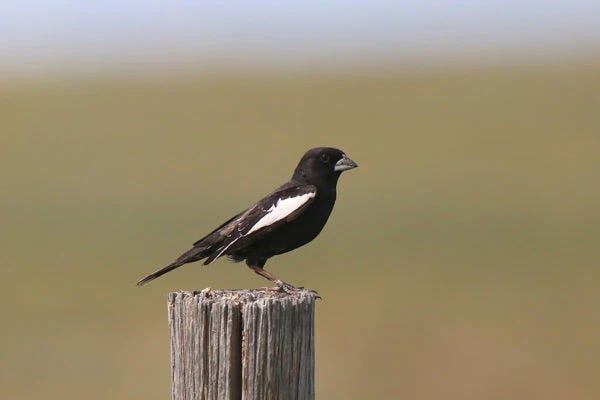
More Tips to Attract Buntings
Buntings are shy birds that prefer quieter, less disturbed habitats. Positioning feeders and baths closer to shelter can help these birds feel more secure. Minimizing disturbances from pets, young children, and family gatherings near bunting thickets can help the birds feel more comfortable. Remove eye-catching objects from the yard, such as spinners or windsocks, that could inadvertently scare away a nervous bunting.
You’ll need patience to attract buntings. In time, your patience will be rewarded with a flock that will add color and song to your yard throughout the year.
See also: What Keeps Birds Out of Your Yard





